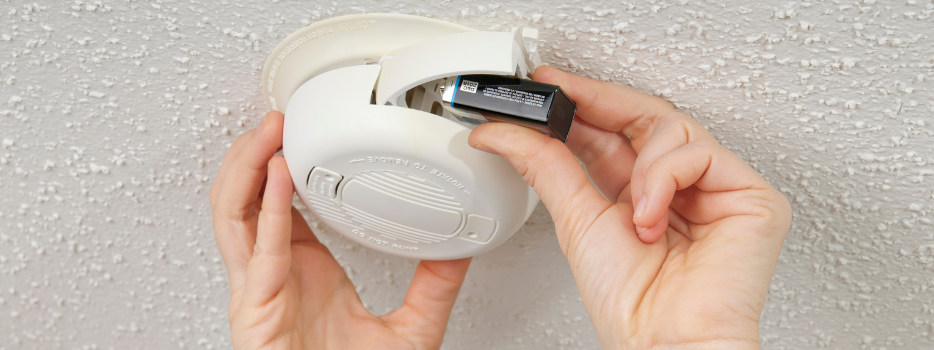You always hear it – Change your clock, change your batteries.
Fire safety isn’t always the first thing on our minds. Did you know that more than 75% of fatal fires occur in residential homes? A fire occurs every five minutes in America. The most common cause of home fires is appliances. This includes plugged in coffee makers, toasters, slow cookers, and even cell phone chargers. Another common fire starter in homes is lint buildup in dryer vents.
Smoke detectors save lives
Having working and appropriately-placed smoke detectors in the home can help save lives. Not having smoke detectors, or improper placement of the devices, increases the risk of not being able to exit your home if a fire starts. It’s important to pay attention if a recall is reported on your smoke detector model – check for recalls, and if yours is recalled, replace it immediately.
The most beneficial placement of heat and smoke detectors is near electronics (e.g., TVs, computers, etc.), in hallways, outside bedrooms, and inside bedrooms. Be sure to have detectors on all levels of your home including the basement.
In addition to replacing the batteries every six months, you should also replace the smoke detector every 8-10 years. They can appear to be working, but the electronics inside have about a 10-year lifespan. It’s important to have an effective alarm because asphyxiation is now the number one killer in home fires according to the Federal Emergency Management Agency (FEMA).
Types of smoke detectors
The common smoke detector types used in homes are ionization and photoelectric. These alarms have warning labels stating they may not sound an alarm in up to 35% of all fires. There are two types of alarms. A smoke detector is designed to detect smoke and sound an alarm when smoke is in the area. A fire alarm is triggered by a smoke detector which then sounds an alarm in the entire building. Do some research when replacing your smoke alarm and consider one designed for both heat and smoke detection. And add a carbon monoxide detector for increased safety.
Also consider installing quality fire extinguishers on every level of your home. They should be mounted on walls with easy access to them. Commercial fire extinguishers can be refilled and have better seals. For kitchen or grease fires a cold fire extinguisher is better.
Make the time and effort to check your fire and carbon monoxide detectors to keep yourself and your family safe.
Source: NFPA Home Fires






